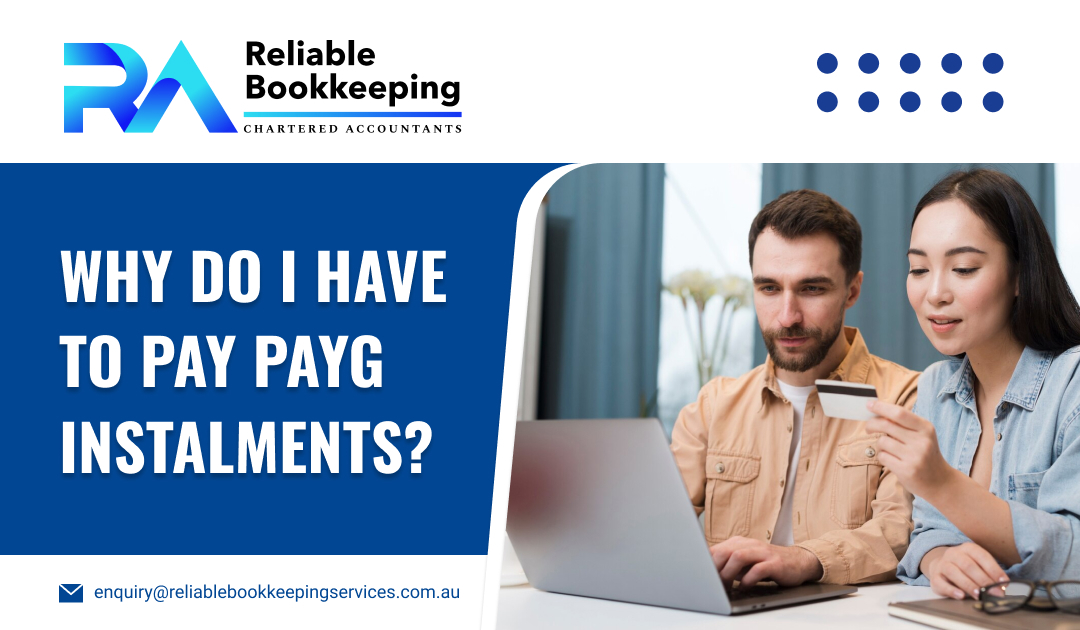Pay As You Go (PAYG) instalments are regular prepayments toward your expected tax on business and investment income. As a business owner or professional, you’re likely familiar with the term PAYG instalments, which are commonly discussed by bookkeepers. However, paying these instalments doesn’t mean you’re exempt from your annual tax return. You still need to file it in the usual way with assistance from your bookkeeper. If you lack the time to manage and pay the instalments, it would be worth considering small business bookkeeping services.
Who is Liable To Pay The PAYG Instalments?
The ATO determines if you need to pay PAYG instalments based on the details provided in your most recent tax return. One of the factors they review is your instalment income, which includes your total business and investment income, excluding GST and capital gains.
If you are an individual (including a sole trader) or a trust, you will be automatically enrolled in the PAYG instalments system if you meet all of the following criteria:
- Instalment income of $4,000 or more from your latest tax return
- Tax payable of $1,000 or more on your latest notice of assessment
- Estimated (notional) tax of $500 or more
A company or super fund will automatically be enrolled in the PAYG instalments system if any of the following conditions are met:
- Instalment income of $2 million or more from its latest tax return
- Estimated (notional) tax of $500 or more
- It is the head company of a consolidated group
Why is it important to pay PAYG Instalments?
If you are a new business owner, or you think you will make business and investment money over the threshold, it would be better to voluntarily enter PAYG instalments. Preparing your tax using PAYG instalments will help you improve your cash flow and avoid a large tax bill when you file your tax return.
How often are PAYG instalments payable?
PAYG instalment due dates are usually 28 days after the end of each quarter. After entering PAYG instalments, the ATO will send you a letter, which will tell you how often you are required to file and pay:
- Most taxpayers often pay instalments on a quarterly basis.
- Based on your situation, the letter may give you the option to pay 2 instalments per year or one annual instalment.
- Businesses with instalment income over $20 million must file and pay their PAYG instalments monthly. When choosing bookkeeping in Melbourne for your business, you will be sure that your bookkeeper can help you calculate the amount of PAYG instalments you need to pay.
Difference between PAYG Instalments and PAYG Withholding
If you have employees in your company, you must withhold taxes and before that, register for PAYG withholding. The withholding is required to keep a part of the payment you make to your staff, contractors and other businesses. This withheld payment is submitted to the ATO by the employer with the help of a bookkeeper. This means that do this on your staff’s behalf, so they can claim against the amount withheld at the end of the financial year. You must provide documentation of the withheld amount and its payment to the staff and submit a PAYG withholding payment summary annual report to the Australian Taxation Office (ATO). You can file and pay your PAYG instalments online, by mail or through your tax agent or BAS agent. When searching for a ‘tax accountant near me’, be sure to check their qualification and experience to be sure that they will file PAYG instalments accurately.
Conclusion
Now, you know the reason for filing and paying PAYG instalments along with the difference between PAYG instalments and PAYG withholding. To maintain accurate records while filing and paying PAYG instalments, you can choose our reliable bookkeeping services.

